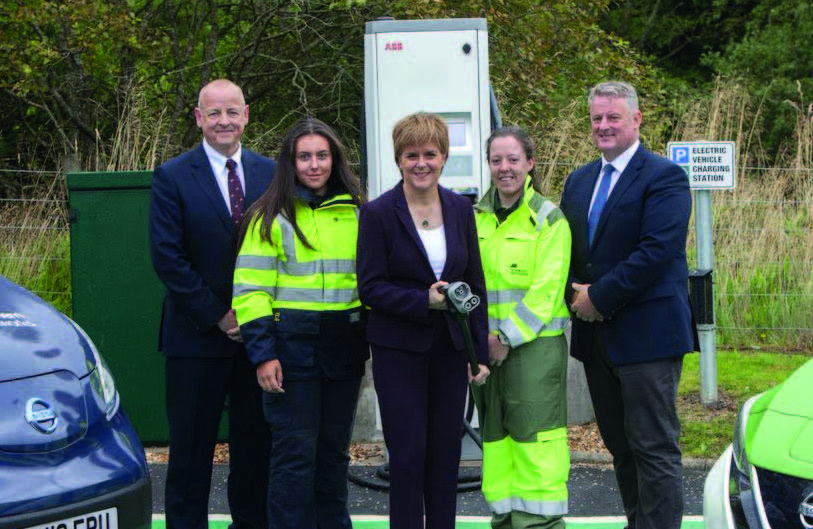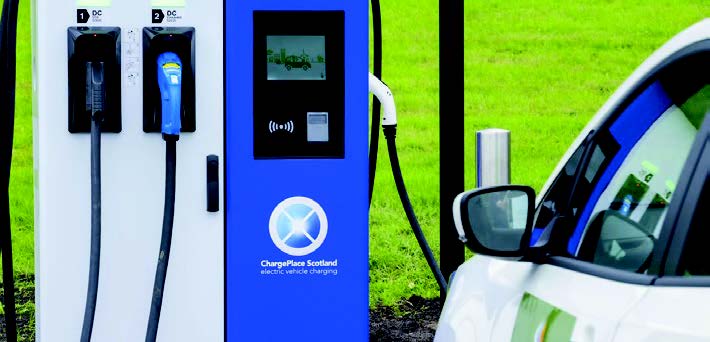Delivering the vision - Installing Refuelling and Charging Infrastructure
The zero emissions mobility Industry in Scotland should work with Government to build on initial work on the battery electric vehicle charging deployment programme to deliver enabling infrastructure for zero emissions vehicles across all zero emissions mobility technology. Industry and government should work with the consortium for hydrogen in Scottish transport, as referenced in the draft Hydrogen Action Plan, to establish hydrogen refuelling to support the use of hydrogen across all appropriate modes of transport.
Case Study - Project PACE
Project PACE drives electric vehicle charge point growth and efficiencies.
The widespread roll-out of Electric Vehicle (EV) charging points is essential to meeting the Scottish Government’s net zero and carbon reduction targets. The availability of public charging infrastructure will encourage car users to switch to zero emission vehicles with greater confidence.
Project PACE was formed to trial the approach of an electricity network provider leading on the planning and installation of public EV charge points at a regional scale. The project received £5.3million of Scottish Government funding, with oversight from Transport Scotland. It was led by SP Energy Networks, which also contributed funding primarily through its Green Economy Fund, and was facilitated by North Lanarkshire Council and South Lanarkshire Council.
The first phase of the project involved a sophisticated site selection study carried out by SP Energy Networks which focused upon car parks owned by North Lanarkshire Council and South Lanarkshire Council. The second phase of the project involved installing public EV charge points on a short-list of optimal sites.
By choosing charging locations that make effective use of the existing electricity network, SP Energy Networks estimated potential savings of between £34,000 and £64,000 in electricity grid connections for each new location. This equated to potential savings of between £1.5million to £2.8million across all the planned sites.
SP Energy Networks estimates that using the same site selection approach across other regions could save £26million in Scotland and £310million across the UK.

The first EV charging hub was opened in August 2020. With a programme of rapid deployment, all 44 EV charging hubs were completed by August 2021 resulting in additional 167 public charge points being added to the ChargePlace Scotland Network. The chargers have been used over 85,000 times since the first charger was installed.

Priorities
Industry in Scotland could work with the Scottish Government to identify and address barriers to the expansion of charging networks and fuelling stations for zero emission heavy duty and niche vehicles on and off road, including the development of hydrogen refuelling at a cost that will be acceptable to users.
Enabling infrastructure requirements could be reviewed to identify gaps in charging and fuelling networks, and in testing and maintenance requirements.
The Scottish Government could continue to use the Switched-on Fleets programme to support the public sector transition to a zero emission fleet, and to help stimulate the growth of Scottish supply chain opportunities.
The potential for shared infrastructure and models for shared usage could be considered as part of funded developments.
Scottish Government and Energy network companies could work together to encourage the early engagement of major fleet users with infrastructure providers. This will ensure that infrastructure providers are able to plan or invest ahead of need to accommodate the fleet ambitions of Scottish businesses.
The Scottish Government and Energy network companies should work together to deliver infrastructure in a way that ensures remote or rural communities are not left behind. IAG members and Scottish Government could work with the consortium for hydrogen in Scottish transport mentioned in the draft Hydrogen Action Plan, aiding the co-design of a framework for and establishment of a network of hydrogen multi-modal refuelling stations to support the adoption of hydrogen vehicles across all appropriate modes of transport.